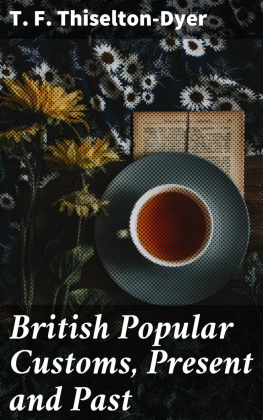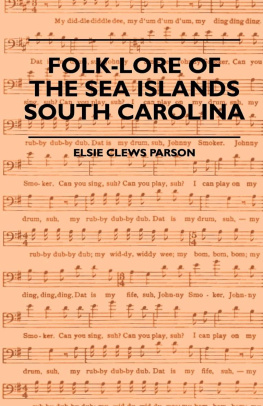T. F. Thiselton-Dyer - Folk-lore of Shakespeare
Here you can read online T. F. Thiselton-Dyer - Folk-lore of Shakespeare full text of the book (entire story) in english for free. Download pdf and epub, get meaning, cover and reviews about this ebook. year: 2017, publisher: Bhoomi Digital Apps., genre: Romance novel. Description of the work, (preface) as well as reviews are available. Best literature library LitArk.com created for fans of good reading and offers a wide selection of genres:
Romance novel
Science fiction
Adventure
Detective
Science
History
Home and family
Prose
Art
Politics
Computer
Non-fiction
Religion
Business
Children
Humor
Choose a favorite category and find really read worthwhile books. Enjoy immersion in the world of imagination, feel the emotions of the characters or learn something new for yourself, make an fascinating discovery.

- Book:Folk-lore of Shakespeare
- Author:
- Publisher:Bhoomi Digital Apps.
- Genre:
- Year:2017
- Rating:5 / 5
- Favourites:Add to favourites
- Your mark:
- 100
- 1
- 2
- 3
- 4
- 5
Folk-lore of Shakespeare: summary, description and annotation
We offer to read an annotation, description, summary or preface (depends on what the author of the book "Folk-lore of Shakespeare" wrote himself). If you haven't found the necessary information about the book — write in the comments, we will try to find it.
Folk-lore of Shakespeare — read online for free the complete book (whole text) full work
Below is the text of the book, divided by pages. System saving the place of the last page read, allows you to conveniently read the book "Folk-lore of Shakespeare" online for free, without having to search again every time where you left off. Put a bookmark, and you can go to the page where you finished reading at any time.
Font size:
Interval:
Bookmark:


And ye, that on the sands with printless foot,
Do chase the ebbing Neptune, and do fly him
When he comes back; you demy-puppets that
By moonshine do the green-sour ringlets make
Whereof the ewe not bites, etc.,
Take heed the queen come not within his sight;
For Oberon is passing fell and wrath,
Because that she as her attendant hath
A lovely boy, stolen from an Indian king;
She never had so sweet a changeling;
And jealous Oberon would have the child
Knight of his train, to trace the forests wild;
But she perforce withholds the loved boy,
Crowns him with flowers and makes him all her joy;
And now they never meet in grove or green,
By fountain clear, or spangled starlight sheen, etc.
And knighthood tooke of good Sir Huons hand,
When with King Oberon he came to faery land.
The eldest brother, did untimely dy;
Whose emptie place the mightie Oberon
Doubly supplide, in spousall and dominion.
In shape no bigger than an agate-stone
On the fore-finger of an alderman.
Font size:
Interval:
Bookmark:
Similar books «Folk-lore of Shakespeare»
Look at similar books to Folk-lore of Shakespeare. We have selected literature similar in name and meaning in the hope of providing readers with more options to find new, interesting, not yet read works.
Discussion, reviews of the book Folk-lore of Shakespeare and just readers' own opinions. Leave your comments, write what you think about the work, its meaning or the main characters. Specify what exactly you liked and what you didn't like, and why you think so.




